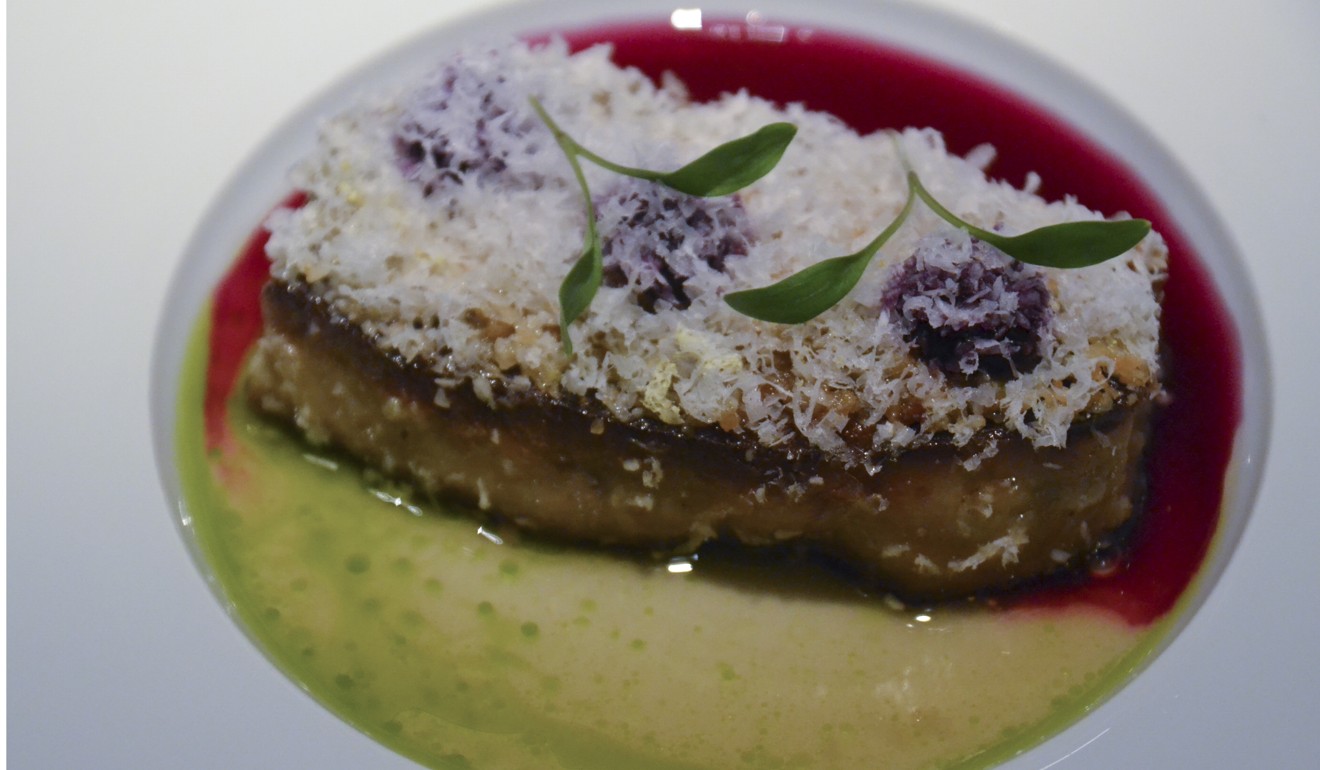
Four of Amsterdam’s best new restaurants help Dutch food scene enjoy a culinary renaissance
Diverse dishes from chefs Sidney Schutte, Dennis Kuipers, Guillaume de Beer and Schilo van Coevorden highlight how the Netherlands’ capital is fast becoming the world’s most exciting and varied eating destination

There are many reasons why Amsterdam stands as one of Europe’s greatest cities. Its extraordinary canals, striking architecture, incredible cultural and artistic legacy from the old masters of Vermeer and Rembrandt through to Van Gogh and Mondrian, not to mention the earthy delights of a very liberal society. Rarely, however, does the city’s cuisine get a mention.
Rarely, in fact, does one see a Dutch restaurant around the world, or even well-known Dutch dishes on global menus.
But, in common with countries like the UK, the Netherlands has undergone a culinary renaissance in recent years and currently stands as one of the most exciting food destinations anywhere in Europe, as borne out by four first-class meals at different price points.
The city’s Waldorf Astoria is the fruit of a painstaking restoration that combined six 17th-century houses into one elegant and historic property. It’s also home to Librije’s Zusje, a restaurant which served one of the best meals I can recall in recent years, thanks to an exceptional combination of restaurant manager Sascha Speckemeier and executive chef Sidney Schutte.
One of the Netherlands’ most respected culinary exports, Richard Ekkebus from Amber at the Landmark Mandarin in Central – which has two Michelin stars and is ranked number 24 in the World’s 50 Best Restaurants – says that Librije’s Zusje is a must-visit.

As well he might, given that Schutte was for years his number two in Hong Kong. Today Schutte holds two Michelin stars and the title of Gault Millau Dutch Chef of the Year for 2017. Speckemeier also bought impressive Asian experience with him as the former front of house at Shanghai’s unique Ultraviolet, today a Michelin three-star restaurant.
The elegant dining room is the setting for the talented team to deliver a remarkable meal, based largely on seafood. Everything is memorable, starting with a simple one-bite amuse bouche of Dutch shrimp with za’atar, enoki mushrooms and peanuts that make for an incredible mouthful.
The experience is heightened further by an amusing presentation as it rests on a bed of tiny Dutch dried shrimp whose tiny black eyes stare unnervingly back at you, not unlike an Antony Gormley installation.
Blue lobster with smoked duck tongue and pickled lychees – two ingredients that clearly signal the chef’s time in Hong Kong – comes with black beetroot and mushrooms under shavings of frozen duck liver infused with lemon geranium. If that reads extremely weirdly, somehow it all comes together sensationally on the palate, the individual flavours and textures distinct yet harmonious.

More shrimp, this time with crispy short rib, watermelon infused with ginger and XO sauce is an umami tsunami, before the absolute stand-out of North Sea sole. The fish is cooked in beurre noisette and served with shellfish marinated in vanilla, under a dusting of fried garlic and flanked by two technicolour sauces, one made from sweetcorn and the other from Mexican tarragon. A beautiful yin and yang for the eyes and the taste buds alike.
Along with impeccable breads, desserts, petits fours and wine pairings, dinner is a true triumph. A lovely final touch to note is the fact that every single kitchen staff member, from the pot-washer upwards, is credited on the back of the menu. They deserve every plaudit.

With the bar raised so high after a first dinner, other Amsterdam locations have their work cut out, but all deliver. Another Michelin-starred spot is Vinkeles at the cool Dylan Hotel, once again an outstanding historic property with a remarkable dining room.
That’s thanks to the huge 300-year-old beams, but most of all the original reddish-brown brickwork with original bread ovens dating from when the building was formerly a bakery, before becoming an orphanage.

Luckily, fears of a culinary Oliver Twist prove ungrounded, with glorious food following throughout from chef Dennis Kuipers. Three amuses bouches set the tone, one a beautiful “edible pearl” made with gin, triple sec and oyster juice.
The next, a savoury cheesecake that incorporates pickled vegetables from Kesbeke, a Dutch institution that has been making pickles, vinegars and mustards since 1948, with the bite served on one of their jar lids. Finally, a delicious spoon of clams with flowers, preserved almonds, grapes and lightly spiced oil.
Three dishes from the €130 (US$154) tasting menu linger longest in the memory, the first a picture-perfect plate of seared scallops with Jerusalem artichoke, apple, pancetta and curry, where the scallops are surprisingly outshone by brilliant shards of crisp Jerusalem artichoke skin.
The next, ruby-red cuts of Anjou pigeon breast, joined by preserved blackberries, beetroot licorice and an incredible deep and dark sauce made from the pigeon bones thickened with duck liver. Finally an exceptional dessert of mandarin sorbet with an espuma cheesecake foam over oatmeal crumble – and coriander.
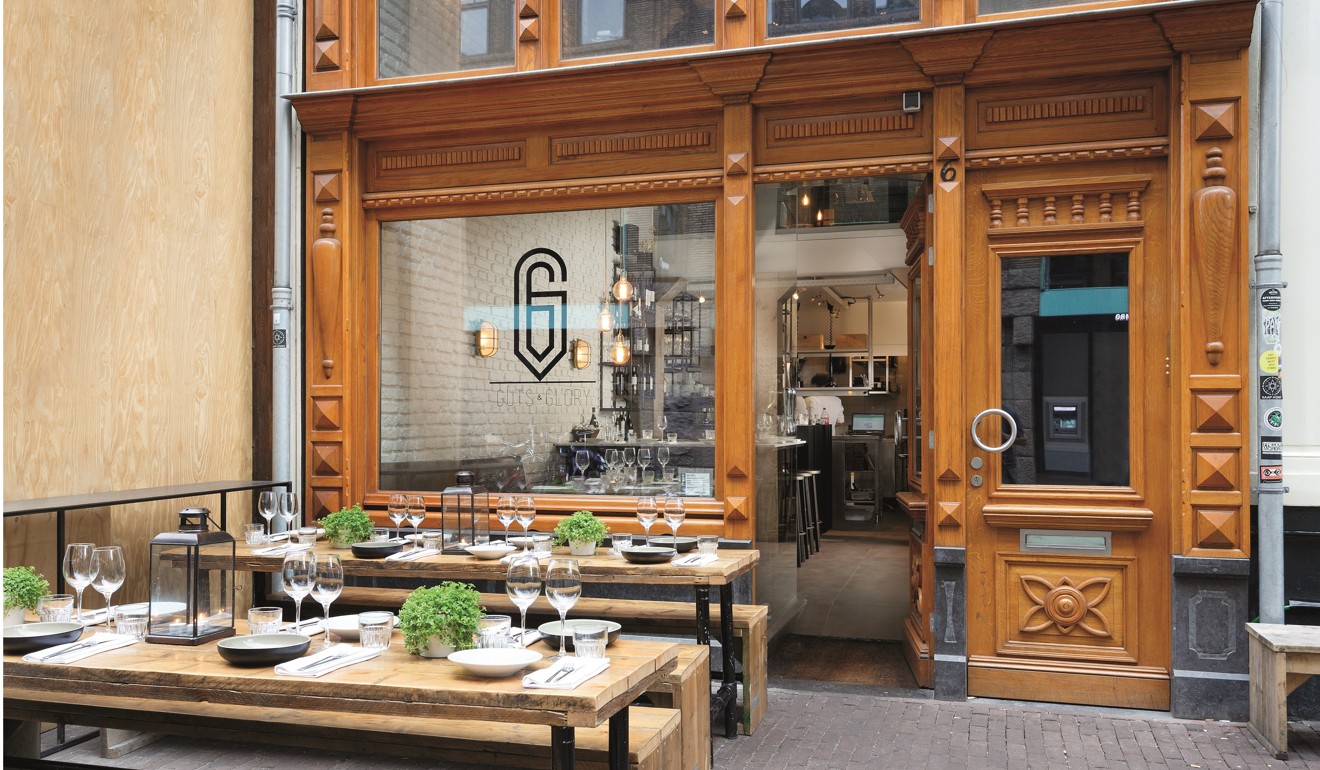
The last two destinations were more casual, and less fine dining, starting with the wonderfully-named Guts and Glory. It’s a family affair as young chef Guillaume de Beer is joined by his sister Claire in front-of-house, serving lunch and dinner menus where five courses in the evening run €49.
Their shtick is quite unusual, namely that they completely change the menu every couple of months to focus on either ingredients or cuisines. So in the past they’ve featured, for example, menus on Latin America, vegetables, French classics or chicken. Luckily my visit coincided with their home-grown Dutch menu of elevated comfort food.
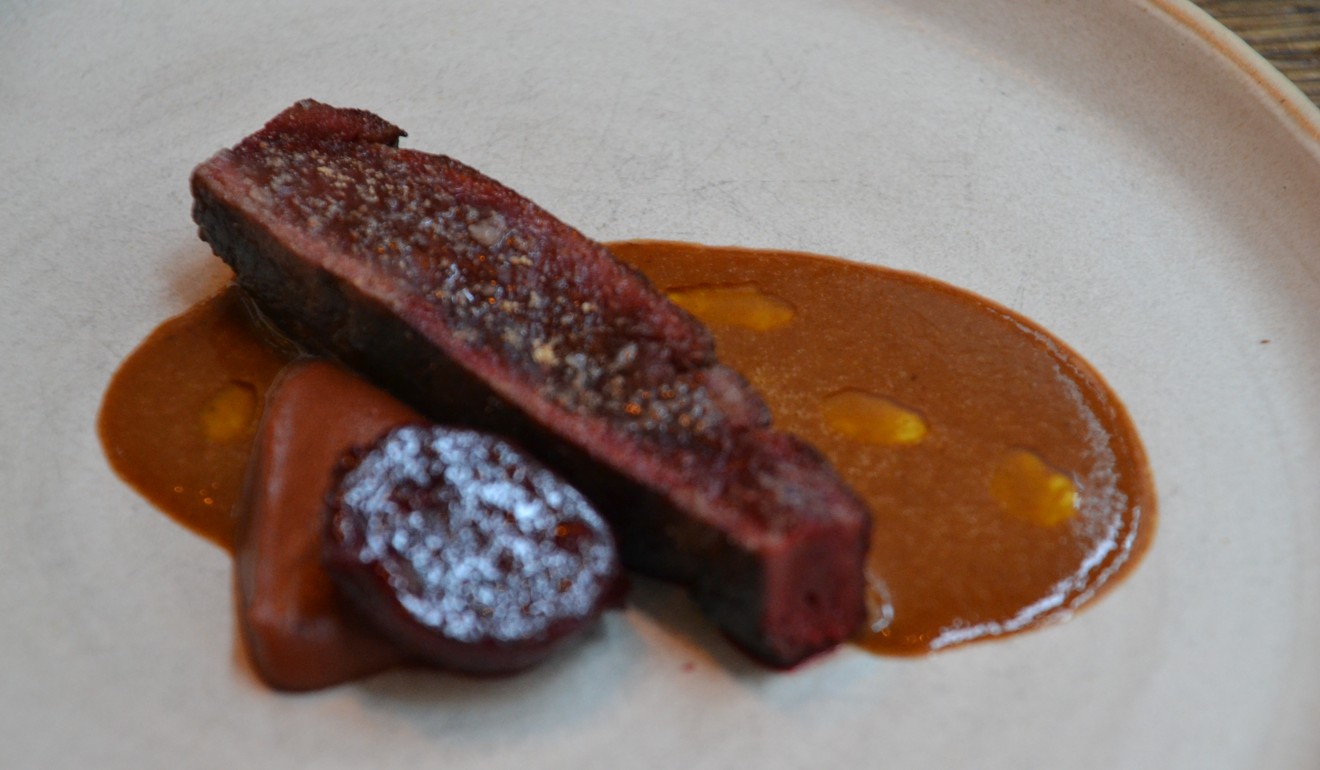
That meant a start of excellent bread paired with buttermilk-heavy butter and a smooth paté made from chicken liver and pork, before simple fried herring surrounded by sharp pickled cucumber.
Next a bona fide Dutch classic of bitterballen, deep-fried beef or veal croquette balls, here served with a mustard soup. As the chef joins me to chat, he explains that Jamie Oliver is booked in that evening, something which doesn’t seem to faze him in the slightest, despite his admission that he grew up watching him.
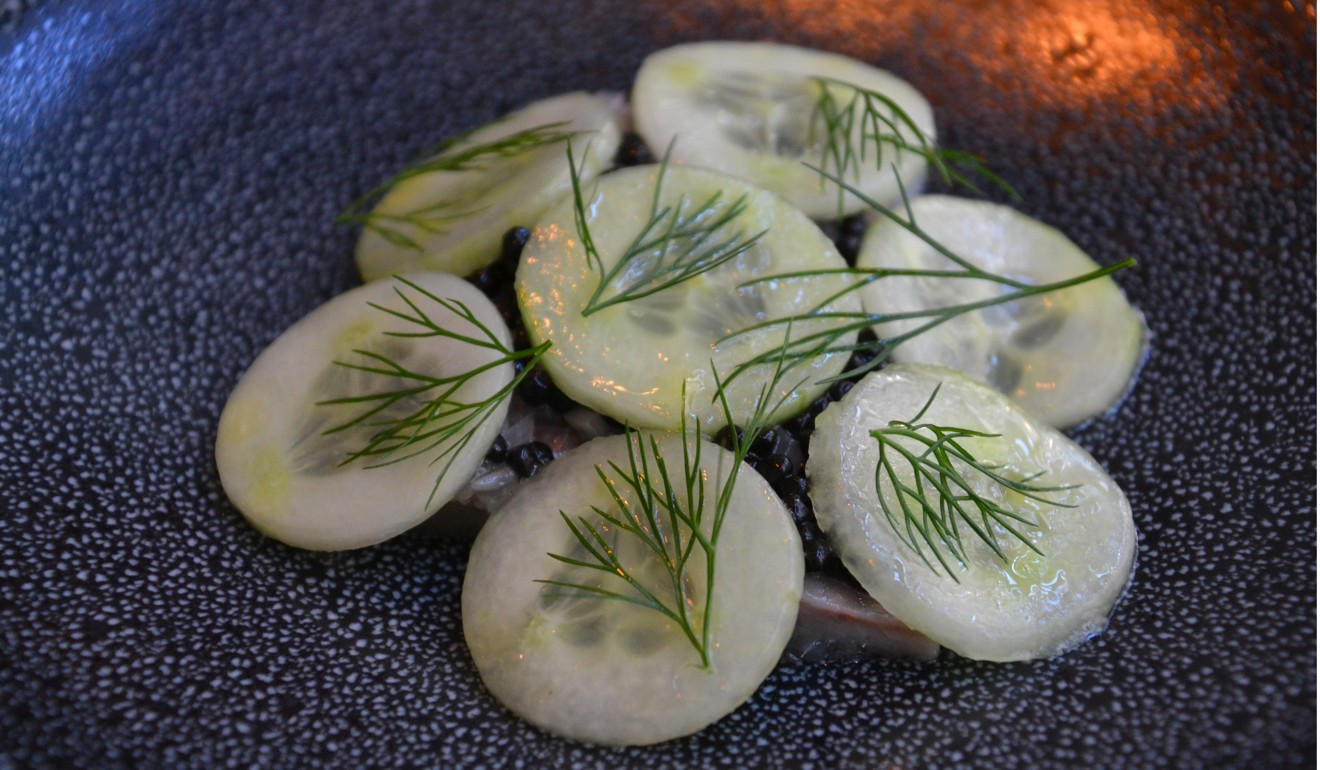
A brilliant plate of local hare follows with smoked and pickled beetroot, served with a jus made from the hare’s liver alongside stewed leg meat with spice. This is seriously classy cooking, just in a very relaxed environment.
The last meal came at The Conservatorium, another example of beautiful restoration as the former music academy had morphed into a hotel, super-chic shopping destination and dining venue. Amid their numerous bars and restaurants, contemporary Asian spot Taiko also came recommended and proved that multiple cuisines and cultures can be handled successfully under one chef.
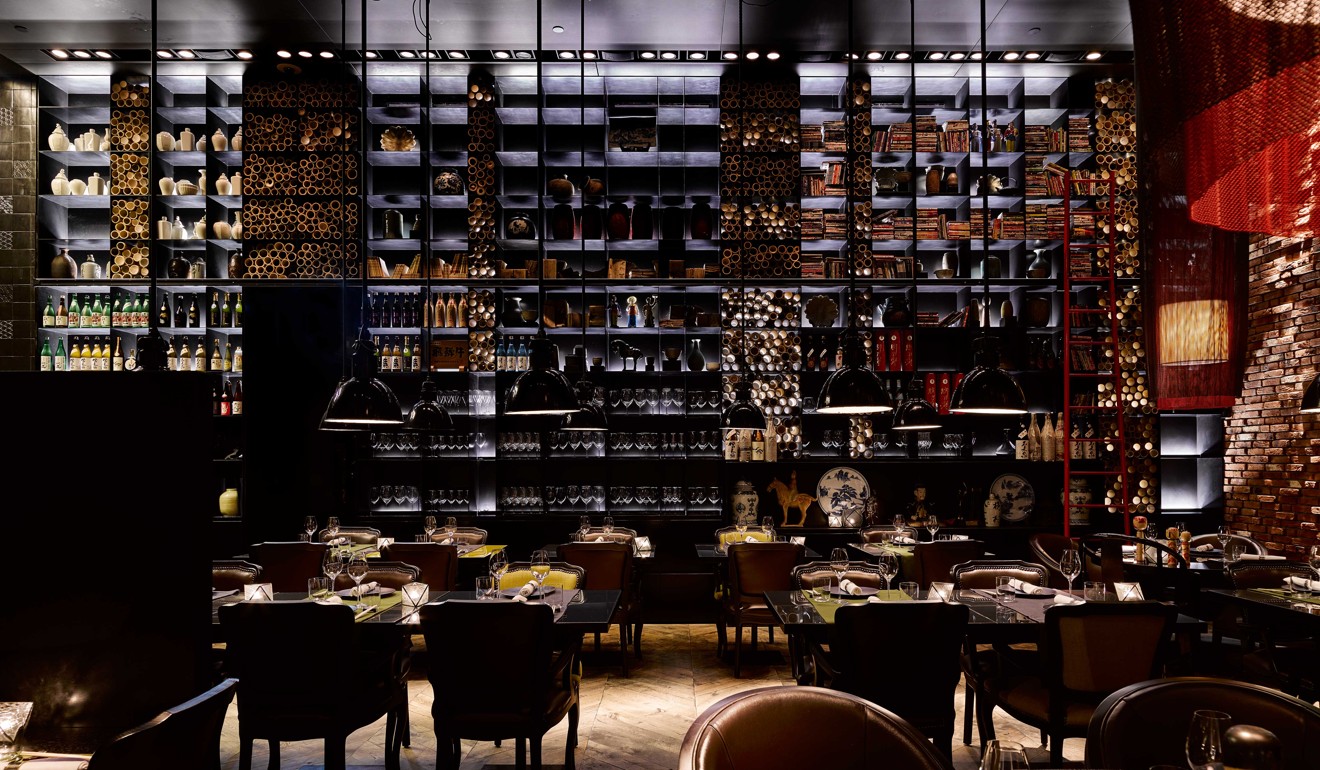
The pan-Asian “progressive omakase” menu from executive chef Schilo van Coevorden, a whopping twelve courses for €115 bought some excellent plates. Green curry ice cream sounds a truly terrible idea but was absolutely delicious, while a king crab gyoza with a crab cappuccino was simply sensational.

Salmon rolls were clearly a crowd pleaser but lacked finesse, but infinitely better fish came with Taiko’s black cod with artichoke cream and crisp. It was better than Nobu Matsuhisa’s version, at least the one in Nobu’s London Shoreditch spot, thanks to being marinated in miso for two days.
More king crab, this time with a sake granita, was delicious and refreshing despite the freezing weather outside, while three countries on a plate – green duck curry with kimchi and fried rice – proved that sometimes global cooperation can indeed work wonders.